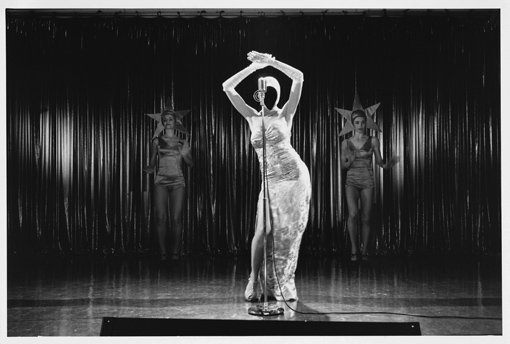2007. Argentina. DVD (Region 2 PAL). 98 minutes. Dogwoof Pictures. £14.99
 About the Reviewer: Josephine Botting is a fiction curator at the BFI National Archive where she programmes film seasons and hosts events. She has contributed to the BFI books 39 Steps to the Genius of Hitchcock and Ealing Revisited (both 2012) and Gothic: the Dark Heart of Film (2013) as well as other BFI publications and online resources. She is currently completing a PhD on British film director Adrian Brunel. She is the producer of the BFI Flipside release, Her Private Hell.
About the Reviewer: Josephine Botting is a fiction curator at the BFI National Archive where she programmes film seasons and hosts events. She has contributed to the BFI books 39 Steps to the Genius of Hitchcock and Ealing Revisited (both 2012) and Gothic: the Dark Heart of Film (2013) as well as other BFI publications and online resources. She is currently completing a PhD on British film director Adrian Brunel. She is the producer of the BFI Flipside release, Her Private Hell.
 In the City Without Voice, it is eternal night and snow falls continuously, reinforcing the silence. The inhabitants have been robbed of their voices by an evil dictator, Mr TV, who controls the people through television and a hypnotic swirling spiral. Appropriately for a film in which almost no one has a voice, La Antena is ‘silent’ (although not strictly, since it has a soundtrack); the lights on the white snow against the dark of night also make black and white a logical choice.
In the City Without Voice, it is eternal night and snow falls continuously, reinforcing the silence. The inhabitants have been robbed of their voices by an evil dictator, Mr TV, who controls the people through television and a hypnotic swirling spiral. Appropriately for a film in which almost no one has a voice, La Antena is ‘silent’ (although not strictly, since it has a soundtrack); the lights on the white snow against the dark of night also make black and white a logical choice.
While the characters have no voices, they do have words and their utterances appear on screen before them, almost like warm breath on the cold air. The words function not only as intertitles for the viewers of the film, but as the means of mute communication between the protagonists.
Director Esteban Sapir is obviously a man with a passion for silent cinema and this Argentinian film incorporates homages to many of the pioneers of early fiction, from Georges Méliès to Fritz Lang. The city resembles that of Lang’s classic dystopia, Metropolis (1927), yet the feel of film seems to belong less to less German Expressionism and more to early Russian cinema, as seen with the frequent close-ups on the faces of the protagonists. The sets and costumes suggest the 1940s, yet the vintage cars have alarms and the screen on which the mouth of Mr TV’s accomplice Dr Y appears begins to pixelate in a moment of stress, deliberate anachronisms which blur the period feel.

La Antena (image: Dogwoof Pictures)
However, there are no such anachronisms in the special effects and Sapir adheres to basic cinematic trickery without resorting to CGI. The film was shot on super 16mm in 2004 but not completed until three years later and it is easy to see why it took so long to complete. While the sets and visuals play a large part in creating the feel and the atmosphere, it is in the post-production where the real creativity of the film lies. Sapir employs various techniques such as stop-frame animation, super-imposition and flicks between positive and negative images to achieve his effects – deliberately restricting himself to techniques available to, and experimented with by, early filmmakers. These effects, along with aspects of the design such as the mountains made of newspaper, add a fairy tale quality to the film.
Of course, silent films were never truly silent and the Latin-tinged score by Leo Sujatovich perfectly matches the action at every moment. With sound effects created as they would have been in the 1920s (again, no electronic methods), Sapir’s recreation of the silent experience is complete.
Being ‘silent’ La Antena might not seem much use as a language learning tool, yet for those just coming to Spanish, seeing words written on screen provides a useful aid to comprehension. However, the film provides little opportunity to hear the language spoken. The English subtitles are something of a distraction from the visuals, particularly as they appear very pedestrian next to the film’s stylish evocation of the Spanish words.
Josephine Botting